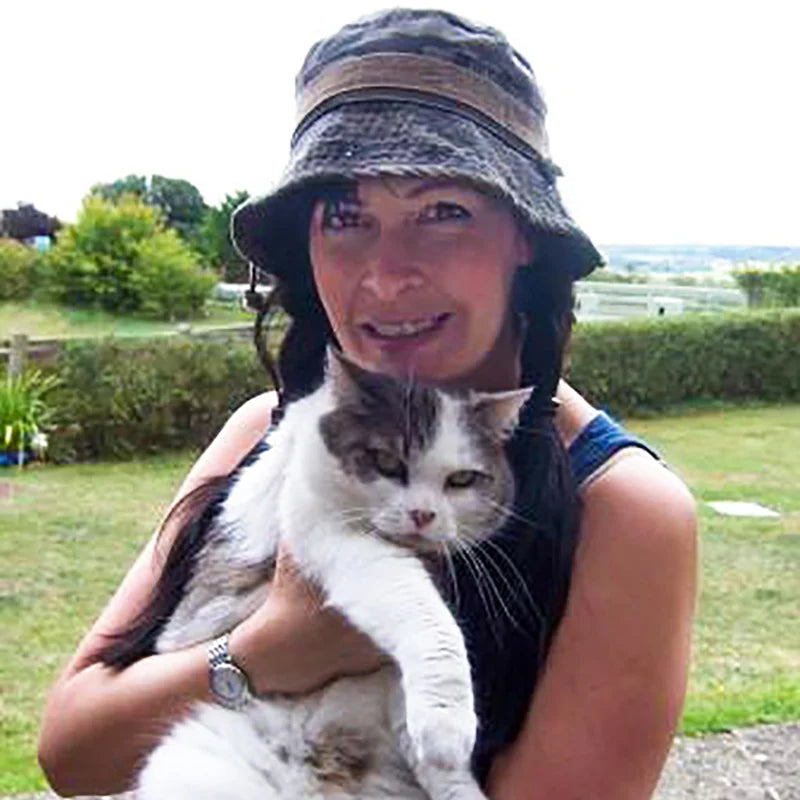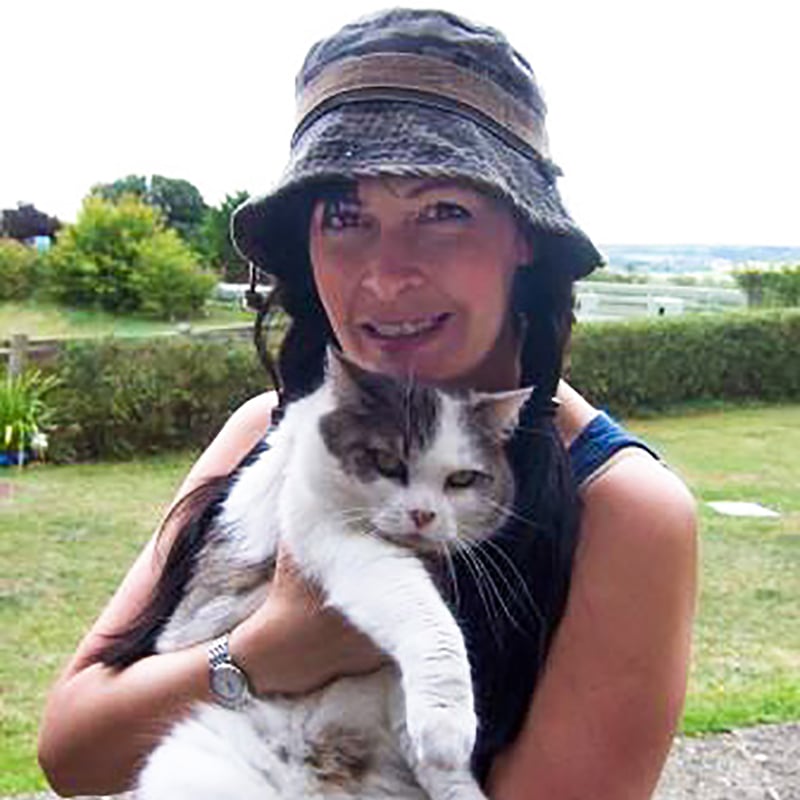About
When your animal is older, injured, or ill, you want to do everything in your power to help them. Just as physiotherapy and massage help strengthen our muscles and joints, it’s just as beneficial for our animals.
Animal physical therapy is a hands-on, natural rehabilitation treatment to get those muscles and limbs working again. In this online course, you will see how physiotherapy uses physical methods - massage and exercise - to restore lost movement. You will learn the benefits of animal physical therapy and exercises you can do with your pets at home.
You’ll be shown the correct techniques to treat different parts of the body. Enjoy quality, hands-on time with your dog or cat as you massage away pain and exercise limbs to restore strength. The aim of animal physical therapy is to keep your pets as active as possible for as long as possible. You can help them build muscle and keep their joints active following surgery or as they get older.
Having hands-on, fun time with your pets is a perfect way to build your bond. Know how to handle your animals confidently so that you are helping and not hindering their recovery. Start learning the benefits of pet physical therapy today.
Recommended Study Time: 30 hours. Completion is recognised with 30 CPD points. See our Accreditation section for more information and to explore all of the certification options available.
Requirements
International Open Academy courses are designed for anyone with an interest in learning. No formal qualifications are required to study with us. Our courses are suitable if you want to learn new skills, start a new career, or if you’re already working in a particular industry and wish to upgrade your talents and enhance your resume.
Lessons
Module 1: Introduction
- Benefits of physiotherapy
- Aims of this course
- Working as Part of a Team
- When Physio Isn’t Safe for Your Pet
Module 2: Physiotherapy
- Hydrotherapy
- Laser
- Electrotherapy
- Cold therapy (Cryotherapy)
- Therapeutic Ultrasound
- Therapeutic Exercises
- Acupuncture
- Massage
Module 3: Anatomy For Physiotherapy
- Introduction of Terms
- Joint Motion
- Forelimb
- Hindlimb
- Spine
- Muscles, Ligaments, and Tendons
- Palpation of the Dog
Module 4: Physio And Your Pet – Assessment
- The Rules of Physical Therapy
- Safety
- Is Your Pet in Pain?
- Your Pet’s Problems
Module 5: Physio And Your Pet – Action
- Massage
- Joint Movements
- Therapeutic exercise
- Heat Therapy
Module 6: The Bigger Picture
- Assistive devices
- Nutritional supplements
- Pain relief
- Partnership with veterinary professional
Career
Who is this course for?
- Pet parents who want to learn about the right techniques and supplements to ensure their furball lives life to the max
- Anyone thinking about a career as an animal physiotherapist and wants to study a taster course first
- People looking after injured or older pets who want to give them a better quality of life
- Anyone who lives with animals or works with them and wishes to give them the best help they possibly can
Career path
- An accredited course in animal physical therapy will look impressive on your resume when you apply for any jobs with animals
- The course is a good foundation for anyone interested in a career in veterinary medicine or animal care
- If you work with animals or run a pet business, your clients will feel hugely relieved that you’ve studied to look after them even if they’re injured or old
Certification
You will be required to complete each lesson in full, and answer exams at the end of each course module. If your pass rate exceeds 55% on each exam then you are eligible to access a certificate of achievement or other accreditation options to recognize your achievement.
Most of our courses will earn you credits through Continuing Education (CE) / Continuing Professional Development (CPD). CE/CPD points are accepted and recognized by professional member bodies and academic institutions across the US and internationally.
All courses are accredited by the International Council for Online Educational Standards (www.icoes.org) and the The International Association of Private Career Colleges (www.iapcc.org). When successfully completing a course, students can choose to purchase an ICOES certificate that recognizes the achievement, from this third-party institution.
Creator
Dr Pippa Elliott, BVMS MRCVS
Expertise: Animal Health and Wellness, Veterinary
Dr Pippa Elliott, BVMS MRCVS, is a veterinarian with 27 years' experience in companion animal practice. As a child, Pippa was pony-mad and can't remember a time when she didn't want to be a vet. She started volunteering at her local clinic at the age of 14, and it was a dream come true when she was accepted for vet school. She graduated from the University of Glasgow, UK. Her knowledge and dedication has helped transform the lives of thousands of students and pets from around the world.
Animal Physical Therapy 
9389 Students. ICOES Accredited. IAPCC and CPD Certified.
9389 Students.
ICOES Accredited.
IAPCC and CPD Certified.

About
When your animal is older, injured, or ill, you want to do everything in your power to help them. Just as physiotherapy and massage help strengthen our muscles and joints, it’s just as beneficial for our animals.
Animal physical therapy is a hands-on, natural rehabilitation treatment to get those muscles and limbs working again. In this online course, you will see how physiotherapy uses physical methods - massage and exercise - to restore lost movement. You will learn the benefits of animal physical therapy and exercises you can do with your pets at home.
You’ll be shown the correct techniques to treat different parts of the body. Enjoy quality, hands-on time with your dog or cat as you massage away pain and exercise limbs to restore strength. The aim of animal physical therapy is to keep your pets as active as possible for as long as possible. You can help them build muscle and keep their joints active following surgery or as they get older.
Having hands-on, fun time with your pets is a perfect way to build your bond. Know how to handle your animals confidently so that you are helping and not hindering their recovery. Start learning the benefits of pet physical therapy today.
Recommended Study Time: 30 hours. Completion is recognised with 30 CPD points. See our Accreditation section for more information and to explore all of the certification options available.
Requirements
International Open Academy courses are designed for anyone with an interest in learning. No formal qualifications are required to study with us. Our courses are suitable if you want to learn new skills, start a new career, or if you’re already working in a particular industry and wish to upgrade your talents and enhance your resume.
Lessons
Module 1: Introduction
- Benefits of physiotherapy
- Aims of this course
- Working as Part of a Team
- When Physio Isn’t Safe for Your Pet
Module 2: Physiotherapy
- Hydrotherapy
- Laser
- Electrotherapy
- Cold therapy (Cryotherapy)
- Therapeutic Ultrasound
- Therapeutic Exercises
- Acupuncture
- Massage
Module 3: Anatomy For Physiotherapy
- Introduction of Terms
- Joint Motion
- Forelimb
- Hindlimb
- Spine
- Muscles, Ligaments, and Tendons
- Palpation of the Dog
Module 4: Physio And Your Pet – Assessment
- The Rules of Physical Therapy
- Safety
- Is Your Pet in Pain?
- Your Pet’s Problems
Module 5: Physio And Your Pet – Action
- Massage
- Joint Movements
- Therapeutic exercise
- Heat Therapy
Module 6: The Bigger Picture
- Assistive devices
- Nutritional supplements
- Pain relief
- Partnership with veterinary professional
Career
Who is this course for?
- Pet parents who want to learn about the right techniques and supplements to ensure their furball lives life to the max
- Anyone thinking about a career as an animal physiotherapist and wants to study a taster course first
- People looking after injured or older pets who want to give them a better quality of life
- Anyone who lives with animals or works with them and wishes to give them the best help they possibly can
Career path
- An accredited course in animal physical therapy will look impressive on your resume when you apply for any jobs with animals
- The course is a good foundation for anyone interested in a career in veterinary medicine or animal care
- If you work with animals or run a pet business, your clients will feel hugely relieved that you’ve studied to look after them even if they’re injured or old
Creator
Dr Pippa Elliott, BVMS MRCVS
Expertise: Animal Health and Wellness, Veterinary
Dr Pippa Elliott, BVMS MRCVS, is a veterinarian with 27 years' experience in companion animal practice. As a child, Pippa was pony-mad and can't remember a time when she didn't want to be a vet. She started volunteering at her local clinic at the age of 14, and it was a dream come true when she was accepted for vet school. She graduated from the University of Glasgow, UK. Her knowledge and dedication has helped transform the lives of thousands of students and pets from around the world.



